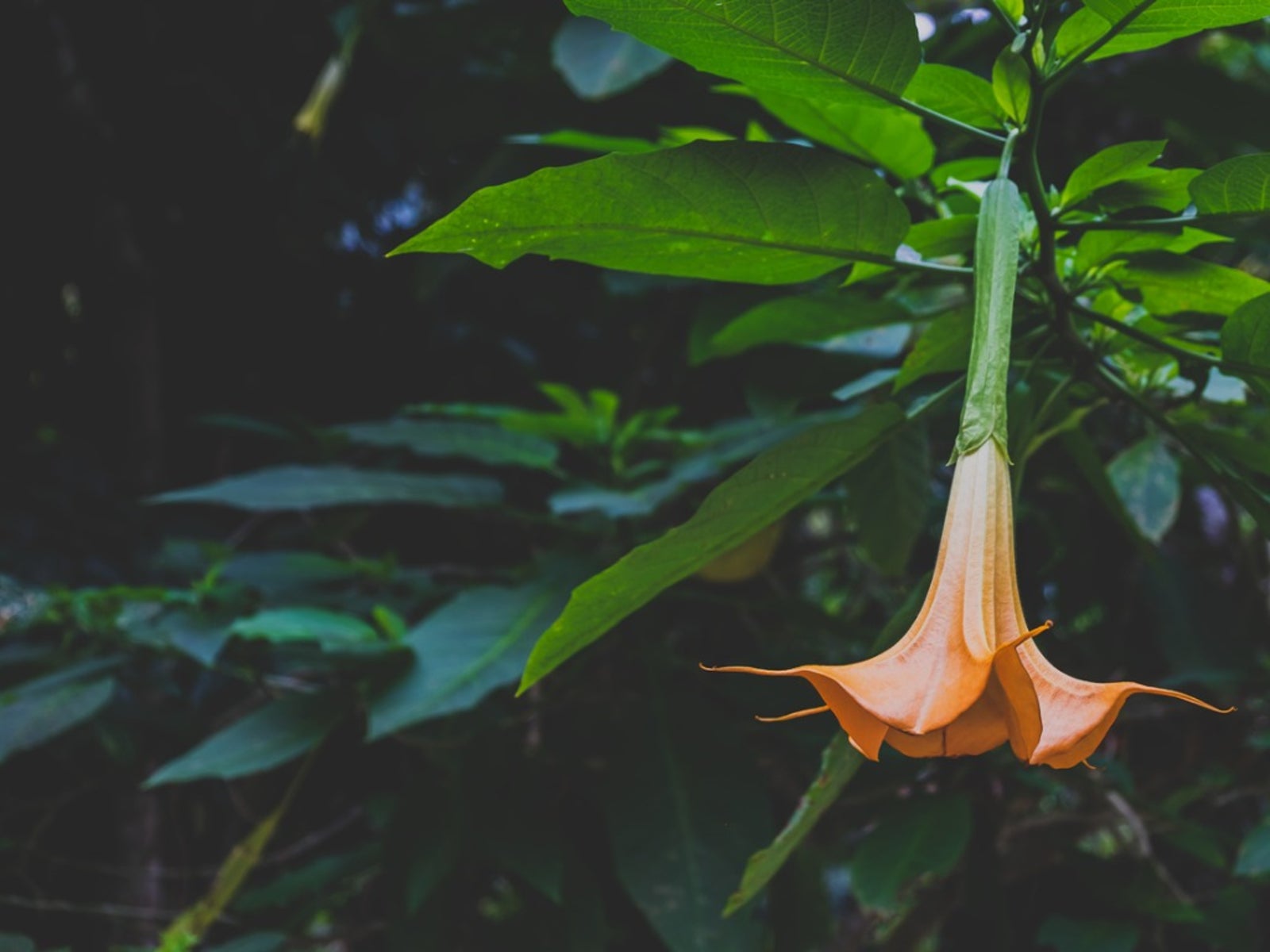Learn How To Prune Brugmansia Trees


Brugmansia makes attractive specimen plantings whether they're grown in containers or situated in garden beds. However, in order to keep them looking their best, trimming brugmansia may be necessary.
How to Prune Brugmansia
Pruning brugmansia forces it to grow more limbs, thus producing more flowers. Therefore, knowing how to prune brugmansia is important. The correct method for pruning these shrub-like plants is to cut off all but the newest growth. Prune back tips to about ½ inch (1 cm.) from the node. Do not prune the main leader unless you want to grow brugmansia in tree form. If you want a bushy tree, prune lateral branches at the joint. Begin pruning the plant when the main trunk forms its first "Y" and then prune back any older branches to encourage additional branching. Cut back as much as one-third of the plant. For larger plants, this could be as much as 1 to 2 feet (31-61 cm.). Keep in mind that tree form plants will need to be continually cut throughout the growing season to maintain their shape.
When to Trim a Brugmansia
To encourage additional blooms, trim brugmansia often. Since these plants bloom on new wood, you should trim a brugmansia whenever its growth becomes excessive. You can also prune brugmansia anytime you want to shape it. Generally, it takes about a month or more for blooms to appear after pruning, so you should trim a brugmansia after the last frost in spring. In addition, allowing them to remain unpruned throughout winter offers some protection from cold damage. If the plants are container grown, pruning brugmansia isn't necessary unless you're moving the plant indoors, in which case, fall is an acceptable time to prune. For those choosing to prune brugmansia during fall, be sure to keep enough nodes on the branches (above the "Y") for additional flowering the following season.
Trimming Brugmansia Roots
You can also trim the taproot of potted plants, trimming just enough to fit into the bottom of the container. Root pruning stimulates new growth and allow you to grow brugmansia in the same container rather than having to repot. Root pruning is usually done in spring before new growth starts. To root prune brugmansia, slide the plant out of the pot and loosen the roots with a fork, removing as much potting soil as possible. Then cut the thickest roots back by at least two-thirds. Allow the thin feeder roots to remain, perhaps lightly trimming the ends. Repot with fresh soil.
Sign up for the Gardening Know How newsletter today and receive a free copy of our e-book "How to Grow Delicious Tomatoes".

Nikki Tilley has been gardening for nearly three decades. The former Senior Editor and Archivist of Gardening Know How, Nikki has also authored six gardening books.